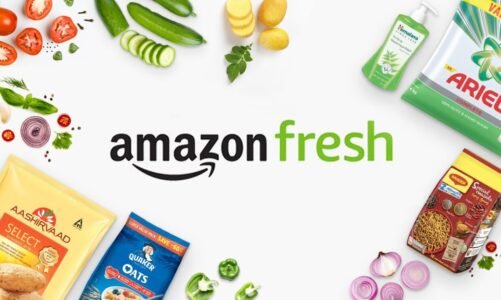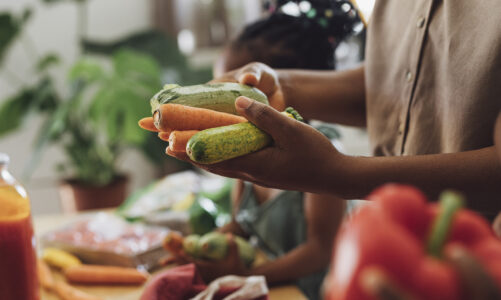Food safety is something we often take for granted, yet every year millions of people fall ill due to contaminated food. Pathogens like Salmonella, Listeria monocytogenes, E. coli, and norovirus are common culprits, leading to recalls, hospitalizations, and in some cases, fatalities.
Recent food safety data reveals certain foods are more prone to contamination than others, either because of how they’re produced, stored, or handled. This blog explores the nine riskiest foods to eat right now—and most importantly, how you can enjoy them while minimizing the risk.
1. Deli and Processed Meats
Why It’s Risky:
Deli meats like ham, turkey, roast beef, and salami, along with hot dogs and other processed meats, can easily harbor Listeria. This bacteria thrives in cold environments like refrigerators and can spread through slicers, cutting boards, and other deli equipment. Pregnant women, older adults, and immunocompromised individuals are particularly vulnerable.
Safety Tips:
- Heat deli meats until steaming before eating.
- Store at 40°F (4°C) or below and consume within a few days of opening.
- Keep deli slicers and kitchen utensils meticulously clean.
2. Leafy Greens
Why It’s Risky:
Spinach, lettuce, kale, and other leafy greens are among the most common foods linked to outbreaks. Contamination often occurs during growing or processing when produce comes into contact with contaminated water, soil, or handling surfaces. Leafy greens are typically eaten raw, so there’s no cooking step to kill pathogens.
Safety Tips:
- Wash thoroughly under running water before eating.
- Avoid bagged greens that are past their “best by” date.
- Store in the refrigerator and separate from raw meat to prevent cross-contamination.
3. Cucumbers
Why It’s Risky:
Cucumbers have been linked to several Salmonella outbreaks in recent years. The contamination can happen in the field through irrigation water, soil, or handling during harvesting and packing.
Safety Tips:
- Wash cucumbers thoroughly before slicing or peeling.
- Avoid cucumbers with cuts, bruises, or soft spots.
- Use separate cutting boards for fresh produce and raw meats.
4. Raw Milk and Unpasteurized Dairy Products
Why It’s Risky:
Raw milk and products made from it, such as certain cheeses, butter, and cream, skip the pasteurization process that kills harmful bacteria. As a result, they can carry pathogens like E. coli, Listeria, and Salmonella. Even aging doesn’t eliminate all bacterial threats.
Safety Tips:
- Opt for pasteurized dairy products whenever possible.
- If you do consume raw milk, buy from reputable suppliers who follow strict hygiene practices.
- Keep raw dairy refrigerated at all times.
5. Soft Cheeses (e.g., Queso Fresco, Cotija, Brie)
Why It’s Risky:
Soft cheeses have high moisture and low acidity, making them perfect breeding grounds for Listeria. Many recent recalls have involved queso fresco, cotija, and similar cheeses. The danger is higher if they are made from unpasteurized milk.
Safety Tips:
- Choose soft cheeses made from pasteurized milk.
- For extra safety, cook or bake soft cheese before eating.
- Pregnant women and older adults should avoid high-risk cheeses unless heated.
6. Eggs (Raw or Undercooked)
Why It’s Risky:
Eggs can harbor Salmonella on the shell or inside. This is a particular concern when eating foods like raw cookie dough, homemade mayonnaise, or undercooked sunny-side-up eggs.
Safety Tips:
- Cook eggs until both yolk and white are firm.
- Store eggs in the refrigerator and avoid keeping them at room temperature for long periods.
- Use pasteurized eggs for recipes that require raw or lightly cooked eggs.
7. Sprouted and Raw Beans
Why It’s Risky:
Sprouts such as alfalfa, bean, and clover are grown in warm, moist environments that are also ideal for bacteria like Salmonella and E. coli. Even frozen sprouted beans have been linked to recent outbreaks.
Safety Tips:
- Cook sprouts thoroughly before eating.
- Avoid eating raw sprouts if you are pregnant, elderly, or have a weakened immune system.
- Refrigerate sprouts and discard any with a slimy texture or foul odor.
8. Frozen or Ready-to-Eat Meals
Why It’s Risky:
Frozen pasta dishes, prepared chicken, and refrigerated ready-to-eat meals can sometimes be contaminated with Listeria if not handled or cooked properly. The bacteria can survive and even grow at refrigerator temperatures.
Safety Tips:
- Follow heating instructions exactly and ensure the food is steaming hot before serving.
- Store ready-to-eat meals below 40°F (4°C) and consume before the expiration date.
- Avoid refreezing thawed ready-to-eat meals.
9. Onions, Organic Carrots, and Fresh Basil
Why It’s Risky:
Fresh produce like onions, carrots, and herbs such as basil have been linked to Salmonella and E. coli outbreaks. Contamination can occur during harvest, washing, or packaging.
Safety Tips:
- Wash thoroughly before use, even if the product looks clean.
- Trim away damaged or bruised parts.
- Store herbs in clean containers and refrigerate if necessary.
Other Foods to Watch Out For
While the above list highlights the riskiest foods right now, others deserve mention:
- Freeze-Dried Fruit Snacks: Occasionally recalled due to Listeria contamination.
- Guacamole and Avocado Products: Rare but serious outbreaks of botulism have been linked to improperly stored or processed guacamole.
How to Protect Yourself from Foodborne Illness
1. Wash and Separate
Wash fresh produce under running water and keep raw foods separate from cooked items to prevent cross-contamination.
2. Cook to Safe Temperatures
Use a food thermometer to ensure meat, poultry, eggs, and seafood reach safe internal temperatures.
3. Store at the Right Temperature
Refrigerate perishables within two hours (one hour if above 90°F/32°C). Keep your refrigerator at or below 40°F (4°C).
4. Stay Updated on Recalls
Check government and food safety websites regularly for alerts and recalls.
Summary Table of Risks & Safety Tips
| Food Category | Main Risk | Safety Tip |
|---|---|---|
| Deli & processed meats | Listeria | Heat before eating |
| Leafy greens | Norovirus, E. coli | Wash thoroughly; avoid cross-contamination |
| Cucumbers | Salmonella | Wash; avoid bruised produce |
| Raw milk & dairy | Salmonella, E. coli | Choose pasteurized products |
| Soft cheeses | Listeria | Buy pasteurized; cook before eating |
| Eggs (raw/undercooked) | Salmonella | Cook until yolk and white are firm |
| Sprouts & raw beans | Salmonella, E. coli | Cook before eating |
| Frozen/RTE meals | Listeria | Heat to safe internal temperature |
| Onions, carrots, basil | Salmonella, E. coli | Wash and trim damaged parts |
Final Thoughts
The foods on this list are not inherently dangerous—they become risky when contaminated during production, processing, or preparation. By practicing good hygiene, proper cooking, and safe storage, you can still enjoy these foods without fear.
Food safety is not about avoiding certain foods altogether—it’s about knowing the risks and taking the right steps to protect yourself and your loved ones.




